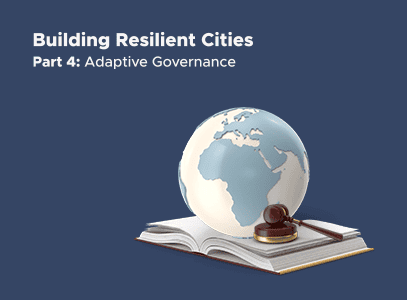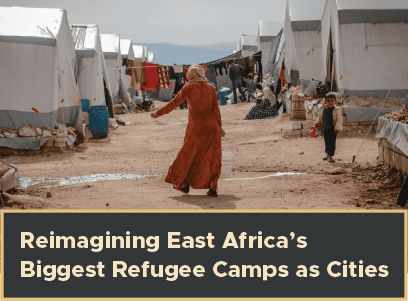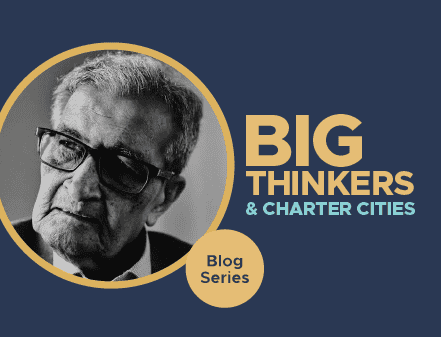South Africa is conceptualizing several new cities. The first of these new cities, Lanseria Smart City, is now a “reality in the making,” President Ramaphosa said during the 2021 state of the nation address. The government is investing $6.8m in the city, which is expected to house up to 500,000 residents.
South Africa needs new urban spaces. Their population is expected to grow from 55 million people to 65 million people in 2050, and their urbanization rate is expected to rise from 66% today to 77%, meaning nearly 15 million new urban residents. Accommodating these new urban residents will be crucial for continued growth of the South African economy.
The Lanseria Smart City plan does have some good elements. It is being developed around the Lanseria International Airport, a minor airport that has expansion plans which could provide connectivity. It is well located, only a 35-minute drive from Sandton, the commercial capital of Johannesburg. The urban plan emphasizes walkability. As such, it is best thought of as a well- planned satellite city.
That being said, it makes many of the common mistakes of master planned cities. It is first and foremost, a shiny object, one which politicians and other powerful people can take credit for, and not something that is designed to meet the needs and challenges facing South Africa. It focuses on buzzwords and the latest fashions; for example, the master plan, “focuses extensively on sustainability, with proposals for power generation including waste-to-energy, micro-hydro, solar and biogas. All residential and commercial buildings will need to have a Green Star rating of between four and five.”
South Africa has had rolling blackouts for over a decade. Wikipedia reports that they experienced their worst energy crisis in December 2019. The Chief Operations Officer for Eskom, the power utility, blamed lack of maintenance and neglect during the previous 12 years, during which South Africa was experiencing blackouts. If a decade of blackouts doesn’t cause an improvement in maintenance, it’s hard to imagine what would.
While sustainability is a laudable goal, and given rolling blackouts, Lanseria should arguably have its own power generation, none of the articles mention a separate grid, backup power generation, or even the rolling blackouts. As far as I can tell, someone Googled recent TED Talks about the energy crisis and added bullet points corresponding to the talks – for example, “urban farming, like rooftop gardens and public grow spaces, will be encouraged.”
Urban farming isn’t efficient. If it was, more people would do it. A focus on urban farming demonstrates that aesthetics is overriding function in the planning.
One of the things that is not mentioned in any of the articles (I couldn’t find the draft master plan), is affordability. Many of the new urban residents will be relatively poor. A beautiful new city, outside of their price range, does little to help them. Nor is there much focus on industry. There is a reference to “commercial, warehousing and industrial zones,” but the focus of the articles is the new technology, the new urban planning, the new everything, and not the boring part of creating jobs and offering people an affordable place to live.
This lack of focus is particularly important in a place like South Africa. Over the past decade South African GDP has declined from $414.6 billion to $351.4 billion, a 15% decline. White South Africans make around three times more than Black South Africans, and from 2011 to 2015 the wage gap between the two groups actually increased. The unemployment rate of Black South Africans hovers over 30%.
There are structural reforms that could improve the South African economy. It ranks 84 on the World Bank Doing Business Index. A higher minimum wage looks likely to cause agriculture to increase mechanization at the expense of employment. South Africa has very high violent crime rates, including crime against women.
Middle Eastern countries have the pocketbooks to spend on shiny, gimmicky cities. They need to make bold bets to transition away to a post-oil world, and their opportunities for success often hinge on them leapfrogging development into a knowledge economy, given their relatively small populations.
Africa does not have those advantages. They are far more budget constrained. They have much larger populations, typically lower skilled. Political power tends to be less centralized. Rather than chasing the cutting edge, focusing on manufacturing and low-cost housing is a better bet.
A new city for South Africa is not a bad idea, however it has to be driven by something greater than a desire for a new city. The logic of charter cities as a public policy tool is implementing reforms that might not be able to pass at the national level. In South Africa this could include better policing, greater labor flexibility, and guaranteed electricity. Unfortunately, Lanseria Smart City does not appear to be heading in that direction.







